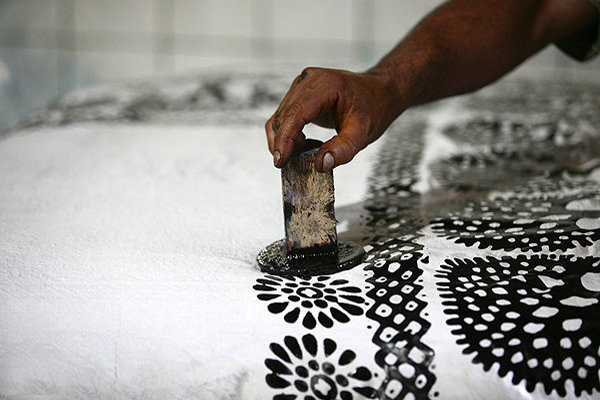About Batik
Batik
The word Batik is derived from Ambatik, which means a fabric with small dots pattern. The suffix Tik means dots, small spots or punctuation, originally. Batik may be derived from the Javanese word Tir Tik which means process and stabilize a part of the fabric against the penetration of dye. On the other hand, batik means light in the dark in an ancient Javanese manuscript from prehistoric, which had referred to light in a dark background (usually dyed dark blue).
Also, in Iranian dictionary means fence and shrine and it is often called Kalaghie among common people. Beside that in lexical definition in Dehkhoda’s dictionary, it has been explained: A silk scarf worn by nomadic women. According to researchers, the batik technique was brought to Iran by Baku immigrants who had migrated to Iran from the invasion of Tsarist Russians.
Generally, hand-printing is painting or discoloring the surface of fabrics by using wooden or metal seals, which is known as the first step of batik. Batik is a process of using melted wax as a resist on fabric. The wax may be painted on either white or colored fabric using a canting or brush or it may be stamped onto the fabric using a copper stamp dipped in melted wax.
The fabric is then dyed, and the areas that have been waxed will not be penetrable by the dye. In Iran, bitumen is used as the wax which has the best quality. The waxing and dying stages can take up to six or even seven times which is completely depends on artist’s decision. It is necessary to mentioned that removing bitumen is the hardest and most complicated part in batik.
Eventually, working on a shiny and white fabric with black bitumen always has had a meaningful concept; Hiding beauty under a layer of bitumen is as similar as hiding consciousness under ignorance. There are series of difficulties and sensitive stages that It would be impossible to defeat them with passion undoubtedly, which always reminds me this valuable sentence: The most beautiful pieces of music are the hardest ones.

